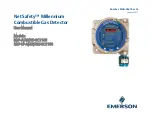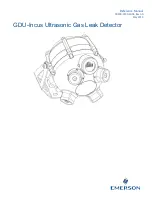
Problems from Low Ground Mineralization:
The GMX is designed to work in an environment of heavy iron mineralization. In some
instances there may be so little mineralization that the search-coil will never go quiet as
it approaches the ground. In other words, there never seems to be any change or only
a faint increase in hum as the coil is pumped. In this instance, lock the ground balance
(lock button) and perform a ground grab before detecting.
Hot Rocks
The ever-present “hot rock” has caused frustration with almost every electronic pros-
pector. Most large ones are on the surface and can be kicked aside when identified.
You will soon learn what they sound like. The “overshoot” or “boing” sound will soon
become familiar. XGB is really a good option when they are plentiful. We find it best to
tune to the majority of the ground matrix and learn what a “hot rock” sounds like. The
XGB of the GMX will recover quickly upon leaving the vicinity of a “hot rock” and will
remain sensitive to gold nuggets. Since there are different kinds of “hot rocks”, it is al-
most impossible to eliminate all of them with one setting. Some will be identified by the
Target I.D. system as if they were iron. In every instance, practice makes perfect.
Negative Hot Rocks:
Negative hot rocks are ones that sit below the ground balance point of the GMX. They
actually produce a null or no sound when directly under the coil, making a sound once
the coil passes them. This sometimes sounds like a “boing” when the ground mineral
and the rock mineral are far apart in mineral TYPE, making them easy to recognize. At
any rate, these are usually black or grey in color and usually magnetic. When hunting
in LOCKED ground balance, they can often be tuned out by performing a Ground Grab
right over them and then proceeding to search with the GMX “over tuned” to the
ground. When using this procedure, be sure to search slowly and keep the coil close to
the ground and level. This will eliminate the bother of such “hot rocks.”
In some parts of the world these specific types of rocks are called “cold rocks,” since
they ring up beneath your current ground balance setting. They are usually easy to
identify thanks to the “boing” sound and difficulty in pinpointing them. If the ground is lit-
tered with these negative hot rocks, not just an occasional one, the XGB will track near
the hot rock balance point, lowering the GMX’s response. You may be forced to dial in
more SAT speed and/or reduce SENSITIVITY to keep a workable THRESHOLD “hum”.
20
















































